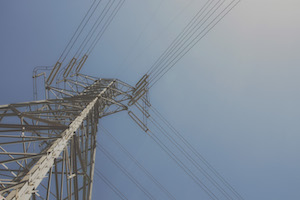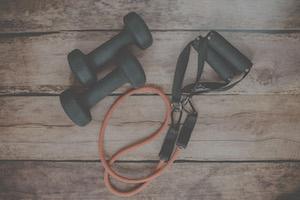Get mold under control
When cleaning up from a flood, the assessment of damaged furniture and appliances is usually foremost on a homeowner's mind.
But according to the Environmental Protection Agency, detection and prevention of mold should be at the top of the list of concerns.
Airborne mold is everywhere.Tiny particles of it float through both indoor and outdoor air.Normally, these spores are harmless - until they find a moist, damp place to land. That's when the real trouble starts.Standing water, along with wet, humid areas, are the perfect breeding ground for mold.According to the state Department of Environmental Protection's online mold resource page, the key to mold control is to get water-damaged areas dry within 24 to 48 hours after exposure to prevent mold growth.If mold does form, the DEP suggests scrubbing it off any hard surface with disinfectant cleaner as quickly as possible.Other tips for cleanup include:Remove any materials that are damp or soaked. This includes furniture and carpeting. The general rule is, if it can't be cleaned and dried within 24 to 48 hours, discard it.Materials that are absorbent, such as ceiling tiles and wallpaper, may have to be removed and discarded. Mold can grow on or behind these surfaces and be hard to detect.Lower humidity levels in your home to below 50 percent to help dry out damp areas. This can be accomplished with a dehumidifier.A complete list of tips for mold removal in the home can be found at www.epa.gov/region03.
There are more reasons to remove indoor mold than just its unsightly appearance or the musty smell it produces.Consistent mold exposure has been linked to various health issues, including asthma.Dr. Nikhil Dave, an allergy/immunology specialist in Cranberry Township, said indoor mold growth causes breathing problems and other severe reactions, especially in those who are allergic to it.Dave said concern has been expressed during the past week by some of his patients who have mold allergies and were affected by the recent flooding."Because of the flooding, the problem now is more indoor mold than outdoor mold," Dave said. "Molds outside are actually down right now because of the cooler temperatures, but indoor mold counts may be up, especially in homes that were flooded."Dave agreed with some of the advice issued by the DEP for cleaning up and preventing indoor mold growth after a flood.The number one recommendation is to get rid of carpeting."Most of the time, from an allergist's point of view, we don't recommend carpeting in the basement," Dave said.Once carpeting gets damp in a basement, it most likely will mold underneath because it has no "breathing" room between it and the concrete floor, Dave said."Even if the carpeting does get dry on the surface, by the time it dries up, you have mold growing there," Dave said.There is no simple way to determine how much mold is indoors."You cannot judge just by looking at it," Dave said. "It's best to have a mold count (test) done."Acceptable mold levels seem to vary, depending on which agency is determining those levels.The National Allergy Bureau assigns levels to airborne mold spores, with 0-900 considered low, 900-2,500 as moderate and 2,500 to 25,000 as high. Anything over 25,000 is considered unacceptable.The DEP says most clean homes will typically have 230 spores per cubic meter, while buildings with evidence of flooding typically contain counts over 2,200.If mold spore counts are above the normal acceptable levels, Dave said owners of such homes should consider remediation."But that can be very expensive, and most insurance companies will not pay for it," Dave said.For those who attempt to clean up visible mold themselves, Dave recommended a few helpful tips:Wear protective gloves and a filtered mask to keep from being further exposed to mold spores. Surgical masks are not considered "filtered," Dave said. Special filtered masks are available at most hardware and home improvement stores.If the person has known allergies to mold, take antihistamines prior to cleaning. Even those who do not have mold allergies can benefit from taking an antihistamine.Use a solution of bleach to wash walls, floors and any hard surface where mold is growing.
When the situation requires more than a little disinfectant, calling a professional mold remediator may be necessary.John Kearns, a mold remediation specialist from Middlesex Township, said homeowners should not try to eliminate mold problems on their own."After 48 to 72 hours, if the affected areas have not been dried out and treated, you are going to have mold growth," he said. "After than point, you need remediation."Kearns said it is usually ineffective for homeowners to try to clean up after that time period."In their attempt to clean it up, they end up spreading it throughout the house," he said.Despite some recommendations - including those from the DEP - Kearns advised against using bleach to kill mold.Using bleach from a bottle can actually encourage mold growth by providing it with a means to grow, Kearns said."If you've ever read the back of that bottle of Clorox, the concentration of chlorine is at best 3-4 percent, with the rest of the solution being water," he said. "Water is one of the three things needed for mold growth."Bleach will kill any bacteria that's in the house, but not mold.Kearns said there are some over-the-counter products that will effectively clean mold, but doesn't recommend them for large infestations.In those cases, mold remediation is necessary.Kearns said most mold remediators will power wash a basement infested with mold with an anti-microbial and anti-bacterial spray and then dry it. After that, the area will be sprayed with a fungicide and then a sealant to prevent future mold growth.The usual cost for this kind of procedure is $1,500 to $2,800, depending on the square footage of the area, Kearns said.Kearns said to determine if a house has unacceptable levels of mold present, his company will take a reading from outside and then compare it with the mold levels inside the home.If the levels are even, Kearns said that doesn't indicate a problem. However, if the mold count inside is more than 10 times higher than it is outside, then remediation is necessary.Once a mold problem is removed, Kearns said homeowners need to make sure any water leaks in the affected area have been repaired as well. Otherwise, the potential for future problems exists.For those who insist on trying to clean up mold themselves, Kearns urges them to at least protect themselves."Wear rubber gloves, a respirator and remove anything that's been damaged or affected from the home immediately," he said. "It's just not something to play with."













